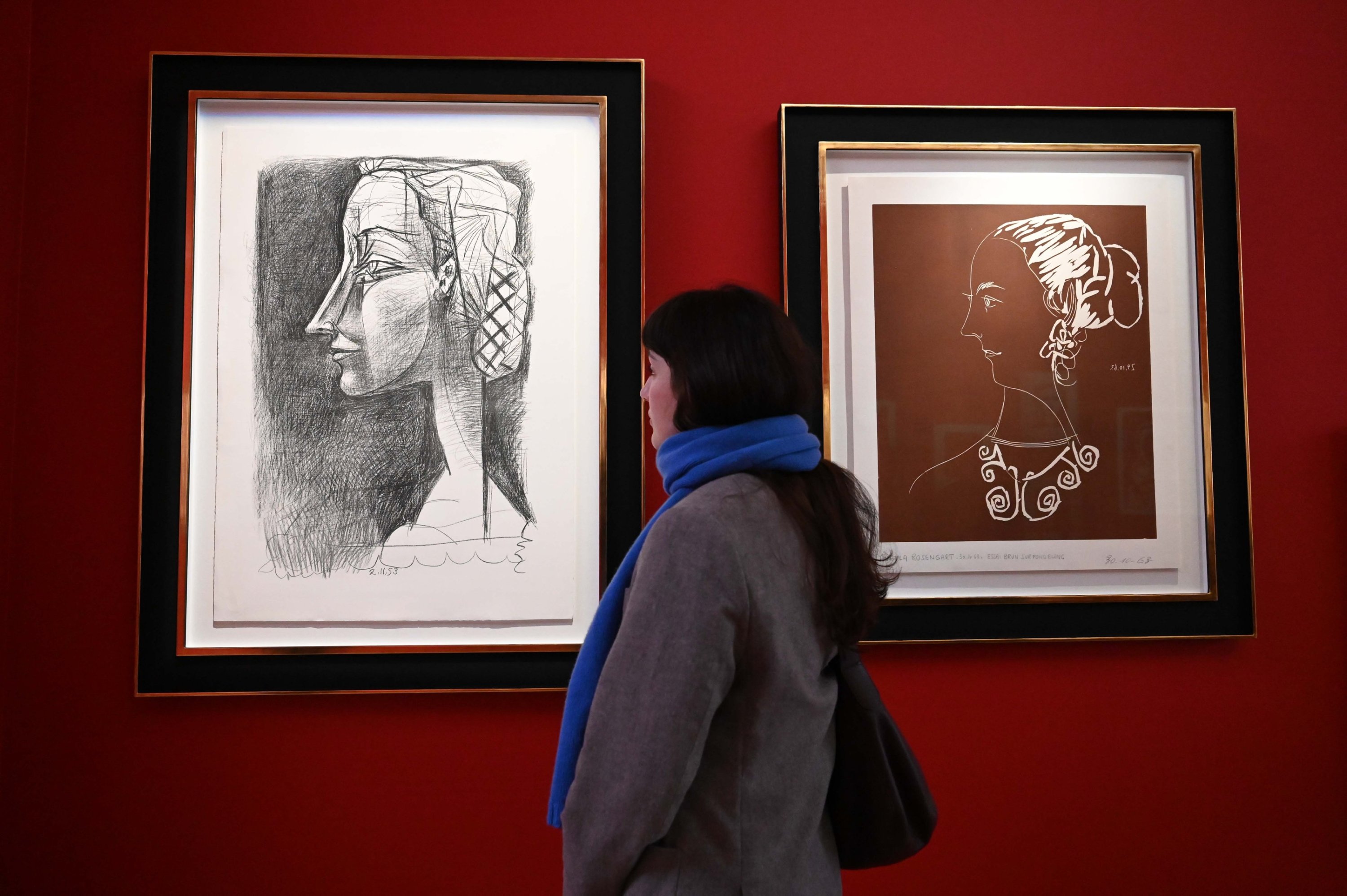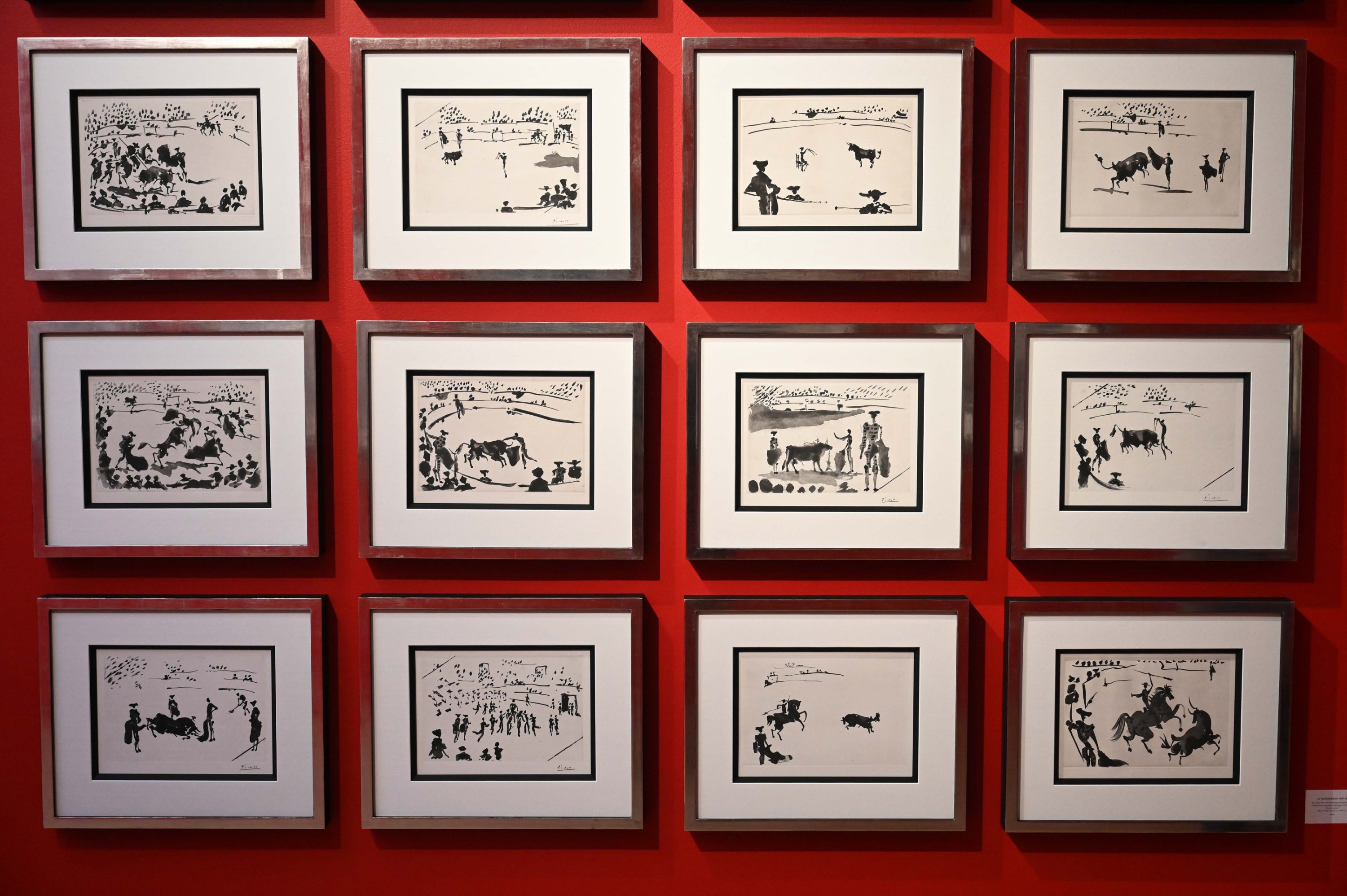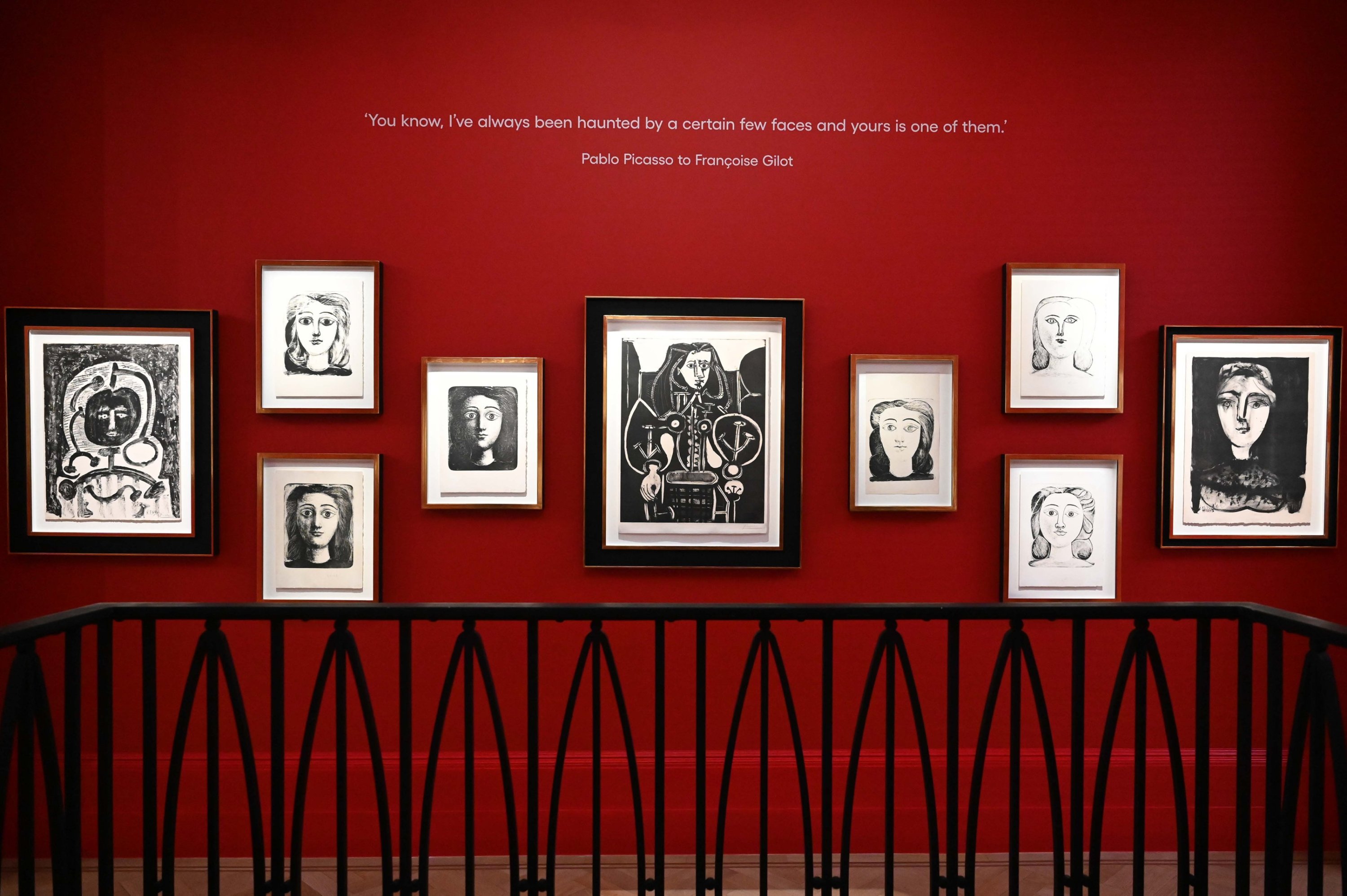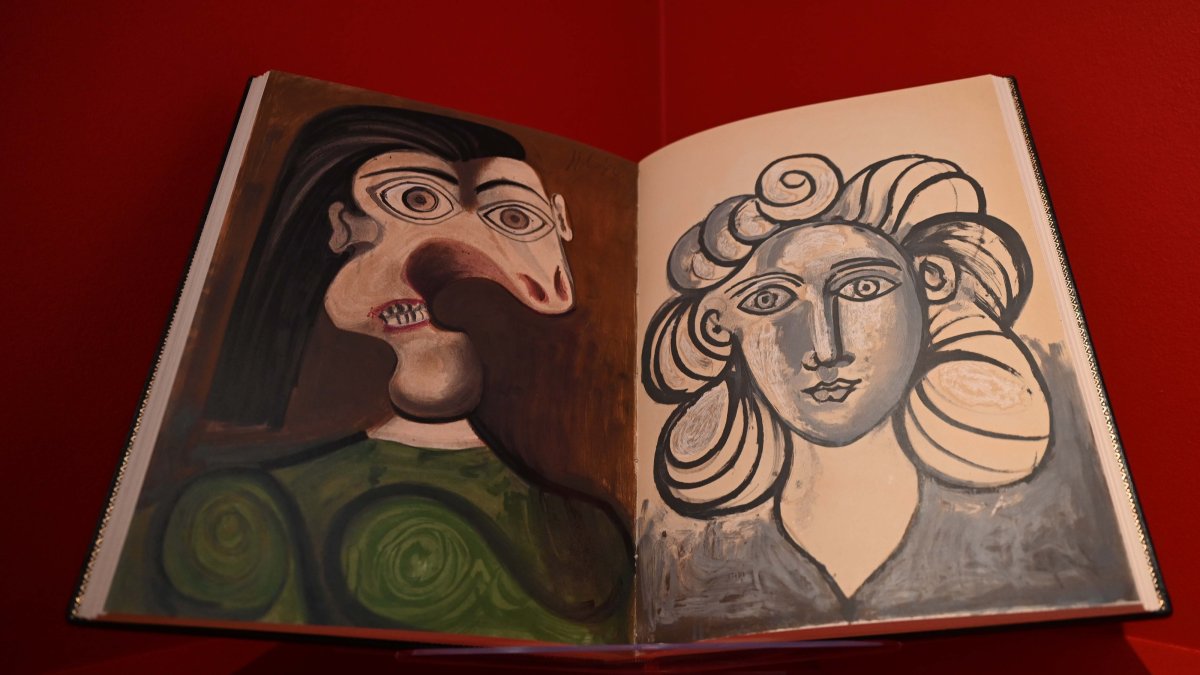At Halcyon Gallery’s elegant London townhouse, the restless spirit of Pablo Picasso seems to breathe anew.
Usually associated with contemporary blue chip art, the space now turns to one of the 20th century’s most enduring figures.
The result is a show that reframes Picasso not as the mythic revolutionary of Cubism, but as a late-career experimenter – a man working at full tilt to outpace time itself.
Featuring more than 130 works, the exhibition spans the last four decades of Picasso’s life, from the 1930s through to his death in 1973.

A visitor explores works on display at “Picasso: A Legacy” at Halcyon Gallery, London, U.K., Oct. 10, 2025. (AA Photo)
The selection focuses on two of his most personal media – works on paper and ceramics – and unfolds across six thematic sections: Artist and Model; Artist’s Muses; Alter Egos; Finding Peace; Still Lifes and Ceramics; and Creativity, Legacy and Death.
Picasso’s ceramics, created between 1948 and 1968 while the artist lived in Vallauris, in the south of France, open the exhibition with a burst of vitality.
Works such as “Chouette” (1968) and “Vase Deux Anses Hautes” (1953) reveal his delight in transforming simple forms into playful, anthropomorphic objects – owls, faces and mythic beasts emerging from earthen clay.
These pieces capture the artist at his most instinctive, when the act of making itself became a kind of freedom.
The gallery’s president, Paul Green, calls the show “a landmark exhibition” that demonstrates Halcyon’s commitment to staging “exhibitions of international significance.” The presentation, he adds, reflects Picasso’s “unrelenting creativity and influence on modern art.”
Alongside the ceramics are Picasso’s works on paper, including lithographs, etchings, and linocuts that showcase his mastery of printmaking.

Selected artworks on display at the Halcyon Gallery’s “Picasso: A Legacy” exhibition, London, U.K., Oct. 10, 2025. (AA Photo)
Among them are complete portfolios such as “La Tauromaquia” (1957-59) and “La Guerre et la Paix” (1954), seen here in rare proofs and multistate editions. The sequence of images highlights Picasso’s obsessive working process – the way each idea mutates through trial, revision and repetition.
Women, mirrors, myth
Picasso’s portraiture dominates the exhibition’s emotional core.
Works such as “Femme au Fauteuil No. 4” (1949) and “Jacqueline de Profil a Droite” (1958) portray Francoise Gilot and Jacqueline Roque, two of the artist’s most significant muses in his later years.
Through their faces and postures, one senses the artist’s oscillation between intimacy and distance, desire and detachment.
The show does not attempt to resolve the contradictions of Picasso’s personal life, but it does illuminate how each relationship fueled a new stylistic direction. His muses were not simply subjects; they were catalysts for transformation.
Elsewhere, the exhibition delves into Picasso’s fascination with mythology. The recurring minotaurs, fauns and bulls – creatures that populated his imagination – appear as alter egos, stand-ins for the artist himself.

Artworks from Picasso’s final years on display at the “Picasso: A Legacy” exhibition at the Halcyon Gallery, London, U.K., Oct. 10, 2025. (AA Photo)
The final section, Creativity, Legacy and Death, turns to Picasso’s final decade – a period of relentless productivity often interpreted as a race against mortality.
These late works are less elegiac than exuberant. They bristle with humor, self-parody and bursts of color, suggesting not resignation but rebellion.
Picasso’s gaze, even in his eighties, was fixed firmly on art history. His reworkings of old masters – Velazquez, Goya, Rembrandt – are less homage than confrontation.
Through them, he measured himself against the canon, determined to secure his place within it. The show makes that ambition palpable: creativity here becomes a form of defiance.
“Picasso: A Legacy” is not a blockbuster retrospective but something more focused and revealing. By zeroing in on the artist’s last four decades, it reframes the familiar narrative of genius as a lifelong process of renewal – of starting again, again and again.
For visitors, it offers an intimate encounter with the artist’s private experiments and shifting identities.

The Daily Sabah Newsletter
Keep up to date with what’s happening in Turkey,
it’s region and the world.
SIGN ME UP
You can unsubscribe at any time. By signing up you are agreeing to our Terms of Use and Privacy Policy.
This site is protected by reCAPTCHA and the Google Privacy Policy and Terms of Service apply.

